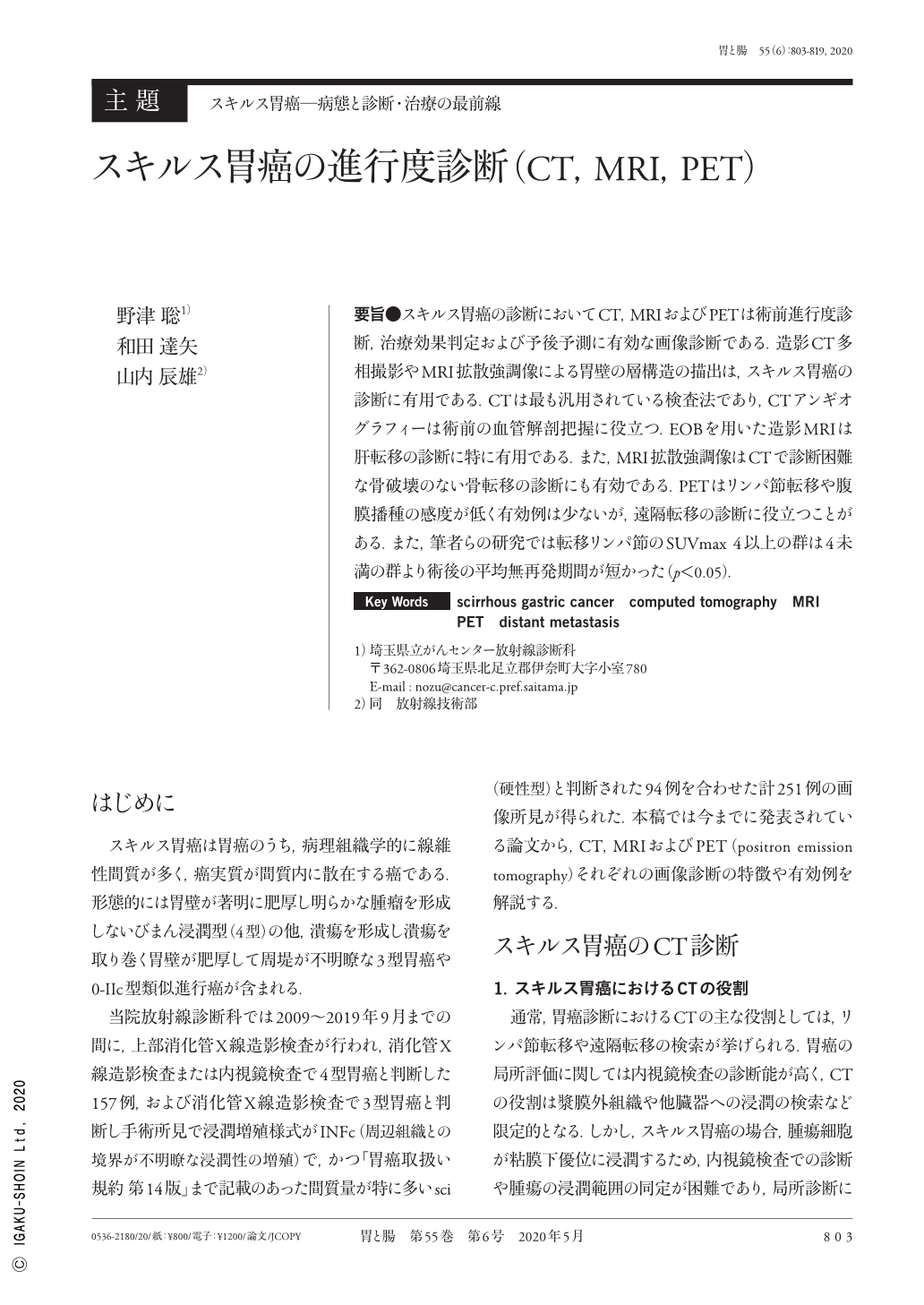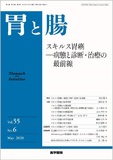Japanese
English
- 有料閲覧
- Abstract 文献概要
- 1ページ目 Look Inside
- 参考文献 Reference
- サイト内被引用 Cited by
要旨●スキルス胃癌の診断においてCT,MRIおよびPETは術前進行度診断,治療効果判定および予後予測に有効な画像診断である.造影CT多相撮影やMRI拡散強調像による胃壁の層構造の描出は,スキルス胃癌の診断に有用である.CTは最も汎用されている検査法であり,CTアンギオグラフィーは術前の血管解剖把握に役立つ.EOBを用いた造影MRIは肝転移の診断に特に有用である.また,MRI拡散強調像はCTで診断困難な骨破壊のない骨転移の診断にも有効である.PETはリンパ節転移や腹膜播種の感度が低く有効例は少ないが,遠隔転移の診断に役立つことがある.また,筆者らの研究では転移リンパ節のSUVmax 4以上の群は4未満の群より術後の平均無再発期間が短かった(p<0.05).
CT(Computed tomography), MRI, and PET imaging findings have various functionalities in treating scirrhous gastric cancer, including cancer progression for preoperative findings, evaluation of response to treatment, and prediction of the prognosis. The characteristic layer pattern on multiphasic contrast-enhanced CT and diffusion-weighted magnetic resonance imaging are beneficial in the diagnosis of scirrhous gastric cancer.
In the evaluation of cancer progression, CT scan is mainly used before cancer therapy, and 3D CT angiography enables surgeons to assess vascular anatomy before gastrectomy.
Unlike CT and PET scan, MRI is not suitable for a wide range of examinations. MRI using Gd-EOB-DTPA is specifically useful in the diagnosis of liver metastasis. MRI is also helpful in the diagnosis of bone metastasis without bone destruction, which is difficult to diagnose by CT.
Although the general role of PET in scirrhous gastric cancer is limited due to low sensitivity of lymph node and peritoneal metastases, it is useful in detecting distant metastasis. Our study of FDG-PET for scirrhous gastric cancer illustrated a median progression-free survival after gastrectomy of 1124 days in metastatic lymph node SUVmax <4 group of 8 patients and 742 days in SUVmax≧4 group of 49 patients(p<0.05).

Copyright © 2020, Igaku-Shoin Ltd. All rights reserved.


